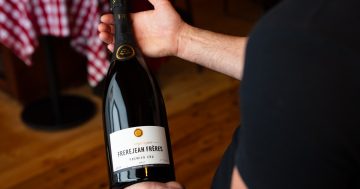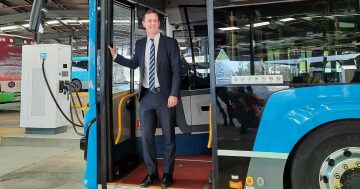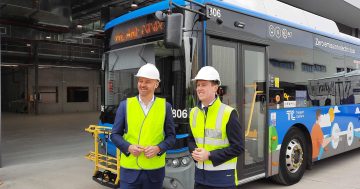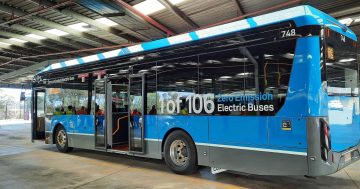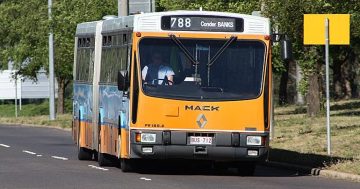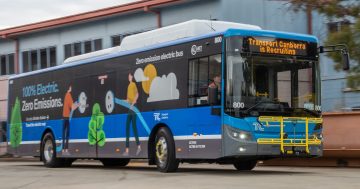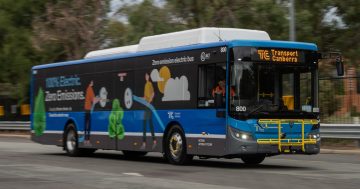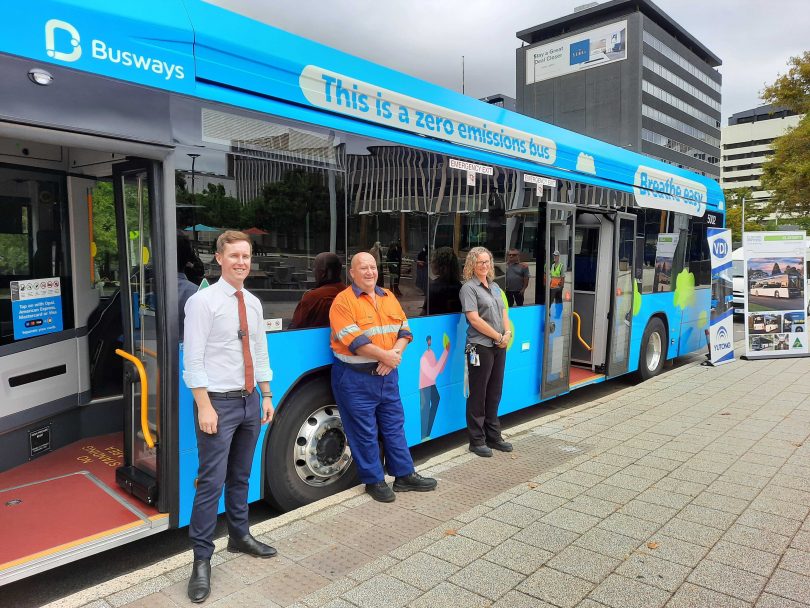
Transport Minister Chris Steel, Transport Canberra mechanic Stuart Shiell and driver Katrina McLachlan with the Transport NSW Custom Denning Element electric bus. Photos: Ian Bushnell.
Canberrans will be riding on electric buses by the end of the year after the ACT Government announced a leasing arrangement for 12 of the zero-emission vehicles.
Transport Minister Chris Steel also announced that the government has gone to market to acquire a further 90 electric buses, which should start arriving in 2023 and hopefully all be delivered by the end of 2024.
Mr Steel made the announcement in front of an Australian-made Custom Denning Element electric bus on loan from Transport NSW which, with its 450 km range, made the journey down the Hume Highway for the announcement.
Four like that will join the fleet this year, alongside eight Chinese-made Yutong buses leased from VDI Australia.
The ACT has already trialled a Yutong and found it suitable for Canberra conditions.
The government had planned to lease just eight buses this year but has extended the arrangement to the four Australian buses, which use solid-state batteries instead of lithium.
“We’ve got the best of both worlds,” Mr Steel said. “So we’ve got the latest innovation in solid-state battery technology from the Australian manufacturer Custom Denning.
“We’ve also partnered with Yutong, which is the world’s largest manufacturer of buses and which has delivered us a previous bus that we trialled in Canberra’s conditions on our networks. So we’re getting the buses that we need to help that transition go forward.”
The first 12 buses come with their own charging infrastructure and will be housed at the Tuggeranong and Belconnen Bus Depots.
“Our buses typically travel 300 to 350 kilometres per day and these will charge overnight at our depots in Tuggeranong and Belconnen for around 3.5 to 4 hours,” Mr Steel said.
“So we are really confident that they will meet the operational needs of Transport Canberra.”
They will start their service on the new Route 47 that runs from Belconnen via Whitlam to Denman Prospect but will eventually be used across the network.
The other 90 buses, which will be delivered in tranches, will be housed at the new electric bus depot at Woden and the other depots.
Mr Steel said feasibility studies were underway for a fourth electric depot on the northside and retrofitting the Belconnen and Tuggeranong depots with electric charging infrastructure.
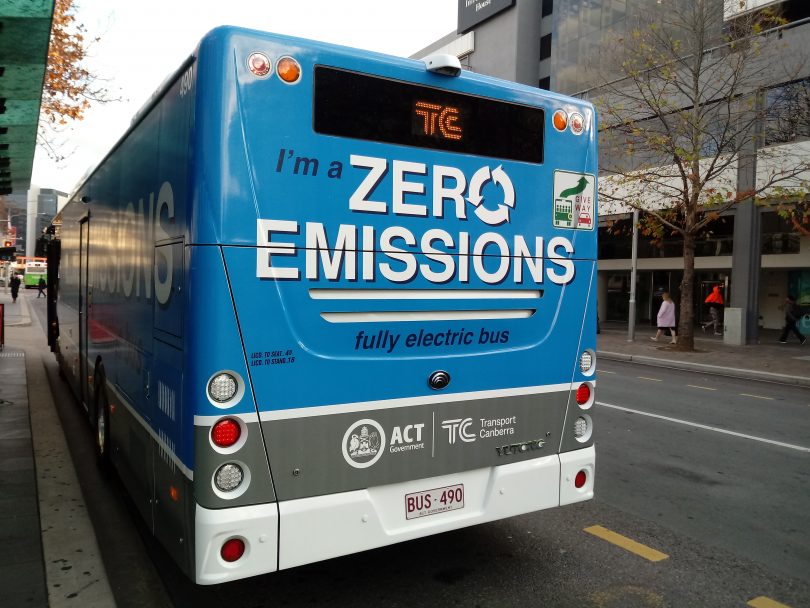
The Chinese Yutong bus that Transport Canberra successfully trialled. Eight will be delivered this year.
The delivery timeline will allow for the construction of the new Woden depot and the installation of infrastructure to support the running of the electric fleet.
Mr Steel said the government would be working closely with Evoenergy to ensure the electricity grid can support the charging of 102 buses.
But he said there are also opportunities for the bus batteries to help support the grid.
“These are large batteries that take energy from the network, but they also have the potential to give back to the network at times when it’s needed as well,” he said.
“So we’re working on all of those opportunities and the potential of co-location of our big batteries, which we’re currently exploring at the moment. So all of these things will work together to support a zero-emissions transition not only to transport but for the whole electricity grid.”
Transport Canberra mechanic Stuart Shiell said mechanics and drivers were both on a steep learning curve.
“It’s a different thing altogether for us. It’s just an exciting time,” he said.
Driver Katrina McLachlan said the electric buses gave a smooth, quiet ride.
“They take off nicely; they brake nicely,” she said.
The registration process to participate in the tender for 90 battery-electric buses is open until 8 March, with the Request for Proposal from suppliers who successfully register commencing soon after.
The government is also negotiating with Scania Australia for the short-term lease of 26 low-emission buses to immediately phase out the remaining 34 inaccessible and polluting Renault buses in the fleet this year. These will then be replaced with the purchase of electric buses.
The government is committed to converting the fleet to zero-emissions vehicles, including hydrogen buses, by 2040 or earlier.











